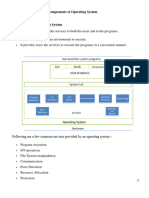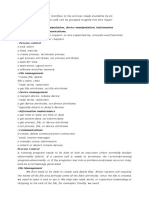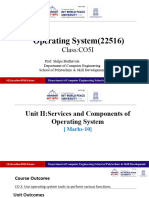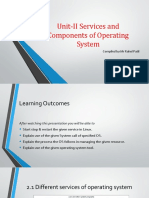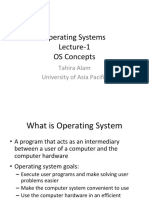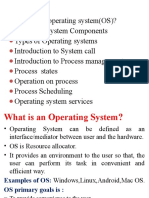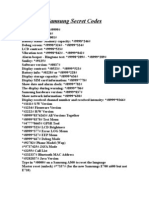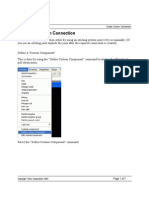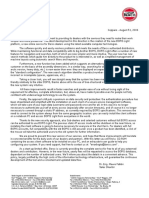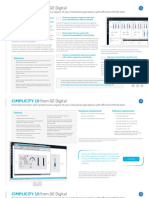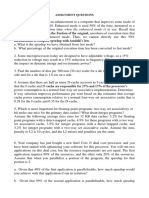0% found this document useful (0 votes)
10 views16 pagesOperating System Concept
The document outlines the key components and services of operating systems, including process management, memory management, file system management, and system calls. It details how processes are managed, the importance of memory and file systems, and the role of system calls in facilitating interactions between programs and the operating system. Additionally, it discusses file permissions and types, as well as the significance of interrupts in operating system functionality.
Uploaded by
arahimhstu7Copyright
© © All Rights Reserved
We take content rights seriously. If you suspect this is your content, claim it here.
Available Formats
Download as PDF, TXT or read online on Scribd
0% found this document useful (0 votes)
10 views16 pagesOperating System Concept
The document outlines the key components and services of operating systems, including process management, memory management, file system management, and system calls. It details how processes are managed, the importance of memory and file systems, and the role of system calls in facilitating interactions between programs and the operating system. Additionally, it discusses file permissions and types, as well as the significance of interrupts in operating system functionality.
Uploaded by
arahimhstu7Copyright
© © All Rights Reserved
We take content rights seriously. If you suspect this is your content, claim it here.
Available Formats
Download as PDF, TXT or read online on Scribd
/ 16






